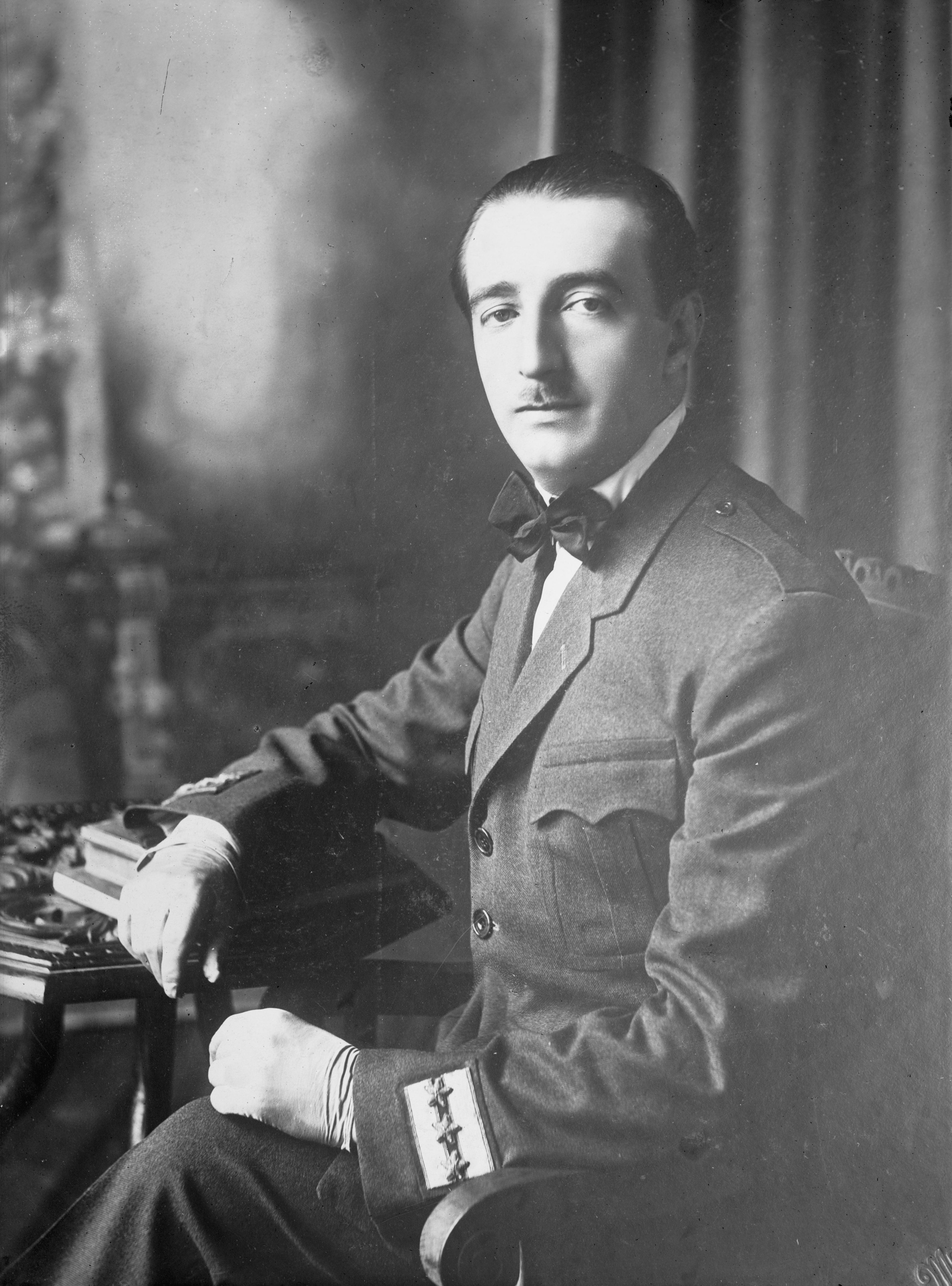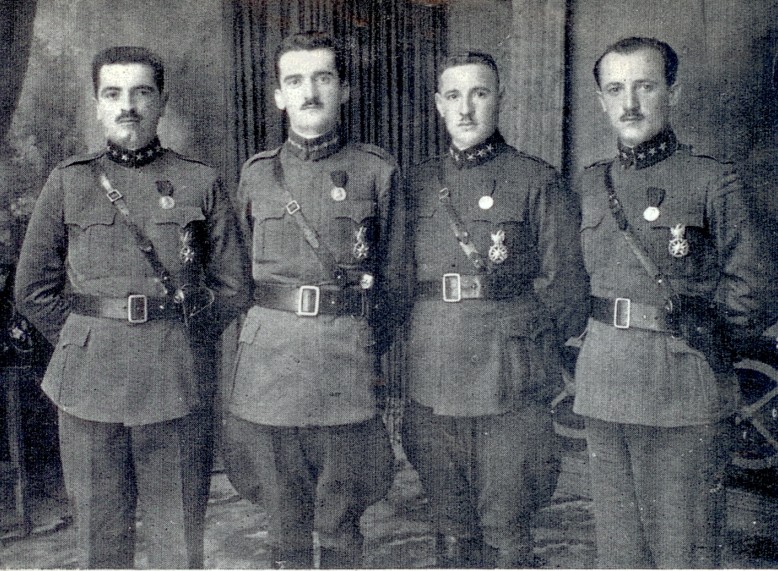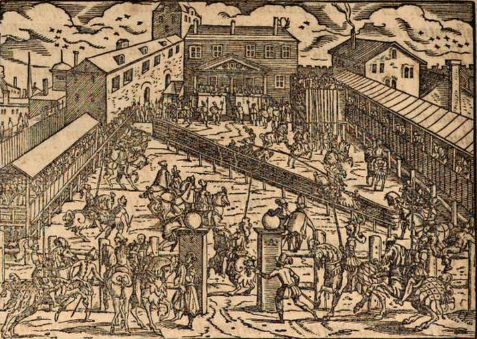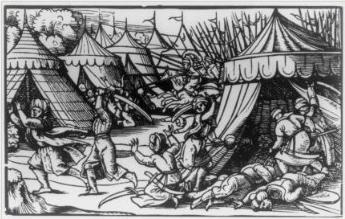|
Milot, Kurbin
Milot is a town and a former municipality in the Lezhë County of northwestern Albania. At the 2015 local government reform it became a subdivision of the municipality Kurbin. The population at the 2011 census was 8,461.2011 census results The municipal unit of Milot is composed of the town Milot and 14 villages, including Fushë Milot, Mal i Bardhë, Vinjoll, Shkopet, Ferr-Shkopet and Skuraj. The town stands on the southern bank of the Mat River. Nearby is the well-known Zogu Bridge
Mat Bridge (or Zogu Bridge) is a bridge across the Mat river near the town of Milot in the northwestern part of ...
[...More Info...] [...Related Items...] OR: [Wikipedia] [Google] [Baidu] |
Kurbin
Kurbin is a municipality in Lezhë County, northwestern Albania. It was created in 2015 by the merger of the former municipalities Fushë Kuqe, Laç, Mamurras and Milot, Laç, Milot. The seat of the municipality is the town Laç. The total population is 46,291 (2011 census), in a total area of 276.25 km2. It is coterminous with the former Kurbin District. History Kurbin is recorded in the Ottoman Empire, Ottoman ''defter'' of 1467 as a ''Hass (Ottoman), hass-ı mir-liva'' property in the vilayet of Kurbin. The settlement had only five households represented by the following household heads: ''Pal Marku'', ''Gjon Sakati'', ''Peter Smaka'', ''Gjergj Balshi'', and ''Peter Manesi''. The settlements of Delbnisht (recorded as ''Dhulbnishti''), Laç, Breshat, Kaçula, Mali i Bardhë (recorded as ''Malibard''), Selita, Gallatë (recorded as ''Galata''), ''Likapaji'' or ''Lugapaçi'' (modern Dauli), Smaka, and Madhësh all belonged to the vilayet of Kurbin. Notable people *Paskal Troks ... [...More Info...] [...Related Items...] OR: [Wikipedia] [Google] [Baidu] |
Ottoman Empire
The Ottoman Empire, * ; is an archaic version. The definite article forms and were synonymous * and el, Оθωμανική Αυτοκρατορία, Othōmanikē Avtokratoria, label=none * info page on book at Martin Luther University) // CITED: p. 36 (PDF p. 38/338) also known as the Turkish Empire, was an empire that controlled much of Southeast Europe, Western Asia, and Northern Africa between the 14th and early 20th centuries. It was founded at the end of the 13th century in northwestern Anatolia in the town of Söğüt (modern-day Bilecik Province) by the Turkoman tribal leader Osman I. After 1354, the Ottomans crossed into Europe and, with the conquest of the Balkans, the Ottoman beylik was transformed into a transcontinental empire. The Ottomans ended the Byzantine Empire with the conquest of Constantinople in 1453 by Mehmed the Conqueror. Under the reign of Suleiman the Magnificent, the Ottoman Empire marked the peak of its power and prosperity, as well a ... [...More Info...] [...Related Items...] OR: [Wikipedia] [Google] [Baidu] |
Administrative Units Of Kurbin
Administration may refer to: Management of organizations * Management, the act of directing people towards accomplishing a goal ** Administrative Assistant, traditionally known as a Secretary, or also known as an administrative officer, administrative support specialist, or management assistant is a person whose work consists of supporting management, including executives, using a variety of project management, communication, or organizational skills, while in some cases, in addition, may require specialized knowledge acquired through higher education. ** Administration (government), management in or of government *** Administrative division ** Academic administration, a branch of an academic institution responsible for the maintenance and supervision of the institution ** Arts administration, a field that concerns business operations around an art organization ** Business administration, the performance or management of business operations *** Bachelor of Business Administratio ... [...More Info...] [...Related Items...] OR: [Wikipedia] [Google] [Baidu] |
Former Municipalities In Lezhë County
A former is an object, such as a template, gauge or cutting die, which is used to form something such as a boat's hull. Typically, a former gives shape to a structure that may have complex curvature. A former may become an integral part of the finished structure, as in an aircraft fuselage, or it may be removable, being using in the construction process and then discarded or re-used. Aircraft formers Formers are used in the construction of aircraft fuselage, of which a typical fuselage has a series from the nose to the empennage, typically perpendicular to the longitudinal axis of the aircraft. The primary purpose of formers is to establish the shape of the fuselage and reduce the column length of stringers to prevent instability. Formers are typically attached to longerons, which support the skin of the aircraft. The "former-and-longeron" technique (also called stations and stringers) was adopted from boat construction, and was typical of light aircraft built until the ... [...More Info...] [...Related Items...] OR: [Wikipedia] [Google] [Baidu] |
Ahmet Zogu
Zog I ( sq, Naltmadhnija e tij Zogu I, Mbreti i Shqiptarëve, ; 8 October 18959 April 1961), born Ahmed Muhtar bey Zogolli, taking the name Ahmet Zogu in 1922, was the leader of Albania from 1922 to 1939. At age 27, he first served as Albania's youngest ever prime minister (1922–1924), then as president (1925–1928), and finally as king (1928–1939). Born to a beylik family in Ottoman Albania, Zog was active in Albanian politics from a young age and fought on the side of Austria-Hungary during the First World War. He held various ministerial posts in the Albanian government before being driven into exile in June 1924, but returned later in the year with Yugoslav and White Russian military support and was subsequently elected prime minister. Zog was elected president in January 1925 and vested with dictatorial powers, with which he enacted major domestic reforms, suppressed civil liberties, and struck an alliance with Benito Mussolini's Italy. In September 1928, Albania was ... [...More Info...] [...Related Items...] OR: [Wikipedia] [Google] [Baidu] |
Prenk Pervizi
Prenk Pervizi (4 May 1897 – 6 September 1977) was an Albanian military figure, General of the Albanian army, who also served as Minister of Defence for a short period during World War II. Pervizi attended the Military Academy in Vienna, Austria, from 1914 to 1918, and later in Torino, 1930–1933. As a military figure, he was a protagonist in the foreground of Albanian history in the years between 1918 and 1944. Friend and right-hand man of King Zog, he remained loyal from the beginning to the end to him and the Albanian Kingdom, 1928–1939. During World War II he was involved in military operations. Recruited by the Italians and sent to the first line of combat, he came into conflict with them, withdrawing the Albanian troops from the Greco-Italian War. He also opposed the German SS troops recruitment process in Albania. Bitter opponent of the communists, after failed attempts to engage some serious support from the British emissaries, he was forced to exile, first in Greece ... [...More Info...] [...Related Items...] OR: [Wikipedia] [Google] [Baidu] |
Evliya Çelebi
Derviş Mehmed Zillî (25 March 1611 – 1682), known as Evliya Çelebi ( ota, اوليا چلبى), was an Ottoman explorer who travelled through the territory of the Ottoman Empire and neighboring lands over a period of forty years, recording his commentary in a travelogue called the '' Seyâhatnâme'' ("Book of Travel"). The name Çelebi is an honorific title meaning "gentleman" or "man of God" (see pre-1934 Turkish naming conventions). Life Evliya Çelebi was born in Constantinople in 1611 to a wealthy family from Kütahya. Both his parents were attached to the Ottoman court, his father, Derviş Mehmed Zilli, as a jeweller, and his mother as an Abkhazian relation of the grand vizier Melek Ahmed Pasha. In his book, Evliya Çelebi traces his paternal genealogy back to Ahmad Yasawi, an early Sufi mystic. Evliya Çelebi received a court education from the Imperial ''ulama'' (scholars). He may have joined the Gulshani Sufi order, as he shows an intimate knowledge of their ... [...More Info...] [...Related Items...] OR: [Wikipedia] [Google] [Baidu] |
Skanderbeg
, reign = 28 November 1443 – 17 January 1468 , predecessor = Gjon Kastrioti , successor = Gjon Kastrioti II , spouse = Donika Arianiti , issue = Gjon Kastrioti II , royal house = Kastrioti , father = Gjon Kastrioti , mother = Voisava Kastrioti , birth_name = Gjergj ( see Name) , birth_date = 1405 , birth_place = Principality of Kastrioti , death_date = 17 January 1468 (aged 62) , death_place = Alessio, Republic of Venice , place of burial = Church of Saint Nicholas, Lezhë , religion = Islam Catholicism , occupation = Lord of the Principality of Kastrioti, , signature = Dorëshkrimi i Skënderbeut.svg Gjergj Kastrioti ( la, Georgius Castriota; it, Giorgio Castriota; 1405 – 17 January 1468), commonly known as Skanderbeg ( sq, Skënderbeu or ''Skënderbej'', from ota, اسکندر بگ, İskender Bey; it, Scanderbeg), was an Albanian feudal lord and military commander who led a rebellion ag ... [...More Info...] [...Related Items...] OR: [Wikipedia] [Google] [Baidu] |
Lezhë County
Lezhë County ( sq, Qarku i Lezhës) is one of the 12 counties of Albania. The population as of 2021 was 120,678, in an area of 1620 km².2011 census results Its capital is the city . Administrative divisions Until 2000, Lezhë County was subdivided into three districts: , , and . Since the ...[...More Info...] [...Related Items...] OR: [Wikipedia] [Google] [Baidu] |
Second Siege Of Krujë (1466)
The second (symbol: s) is the unit of time in the International System of Units (SI), historically defined as of a day – this factor derived from the division of the day first into 24 hours, then to 60 minutes and finally to 60 seconds each (24 × 60 × 60 = 86400). The current and formal definition in the International System of Units ( SI) is more precise:The second ..is defined by taking the fixed numerical value of the caesium frequency, Δ''ν''Cs, the unperturbed ground-state hyperfine transition frequency of the caesium 133 atom, to be when expressed in the unit Hz, which is equal to s−1. This current definition was adopted in 1967 when it became feasible to define the second based on fundamental properties of nature with caesium clocks. Because the speed of Earth's rotation varies and is slowing ever so slightly, a leap second is added at irregular intervals to civil time to keep clocks in sync with Earth's rotation. Uses Analog clocks and watches often ... [...More Info...] [...Related Items...] OR: [Wikipedia] [Google] [Baidu] |
Battle Of Ujëbardha
The Battle of Albulena, also known as the Battle of Ujëbardha, was fought on 2 September 1457 between Albanian forces led by Skanderbeg and an Ottoman army under Isak bey Evrenoz and Skanderbeg's nephew, Hamza Kastrioti. Skanderbeg had been the leader of the Albanians for over a decade and had seen many victories over Ottoman arms. However, after his loss at Berat in 1455 at the hands of Isak bey, Skanderbeg was betrayed by some of his most trusted officers, among them Moisi Arianit Golemi. Golemi returned the next year with an Ottoman force under his command, but was defeated at the Battle of Oranik and rejoined Skanderbeg's army. Later, the dissatisfied Hamza Kastrioti betrayed Skanderbeg and was offered joint-command with Isak bey over a second Ottoman invasion force. The Ottomans arrived in late May 1457 and marched through the Mat River Valley. Skanderbeg tried to delay the vanguard, composed of Akıncı cavalrymen, but upon the approach of the main force, decided t ... [...More Info...] [...Related Items...] OR: [Wikipedia] [Google] [Baidu] |




